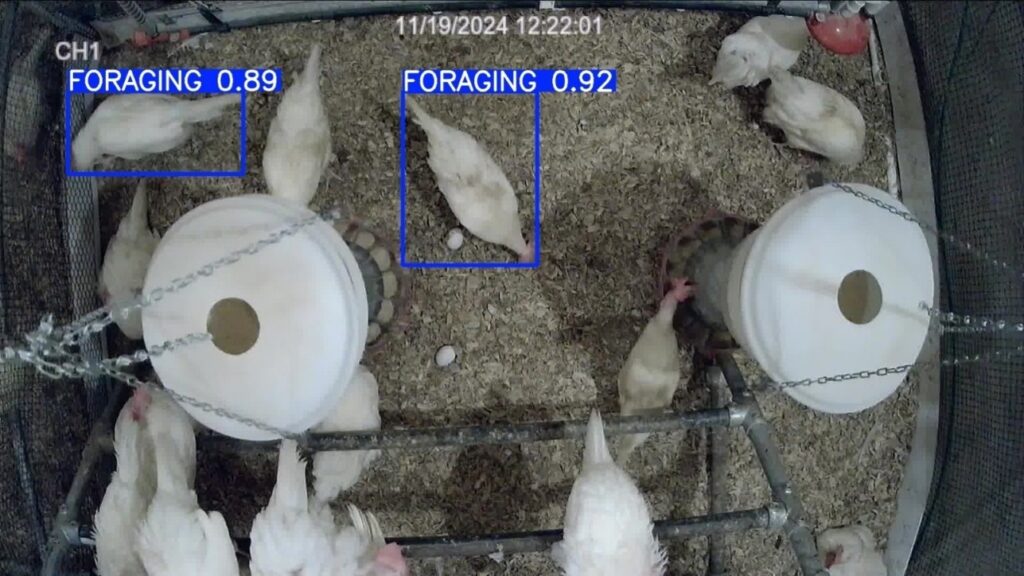Foraging is considered one of the most important natural habits in chickens, as they spend a significant portion of their time doing it (Figure 1). US egg production is shifting from conventional caged system to cage-free production considering the hens will have more freedoms in performing natural behaviors such as dustbathing and foraging. Foraging behavior in hens is an important indicator of animal welfare. It involves both the search for food and exploration of the environment, which provides necessary enrichment. In addition, it has been inversely linked to damaging behaviors such as severe feather pecking. Conventional studies rely on manual observation to investigate foraging location, duration, timing and frequency. However, this approach is labor-intensive, time-consuming, and subject to human bias.

Figure 1. Foraging chickens (photo credit: Big Dutchman & Hobby Farms).
Researchers at the University of Georgia developed a computer vision-based method to automatically detect foraging hens in cage-free systems and compared their performance. A cage-free room was divided into four pens, two larger pens measuring 3 m X 2.3 m with 32 hens each and two smaller pens measuring 2.3 m X 1.7 m with 16 hens each. Cameras were positioned vertically, 2.75 m above the floor, recording the videos at 15 frames per second (Figure 2). A total of 4800 images were used, with 70% for model training, 20% for validation, and 10% for testing.

Figure 2. Top-view of the experimental setup for all four pens as captured by the overhead camera during on-going video recording.
The team trained multiple You Only Look Once (YOLO) object detection models from YOLOv9, YOLOv10, and YOLO11 series, for 100 epochs each. All the models achieved precision, recall, and mean average precision at 0.5 intersection over union (mAP@0.5) above 75%. YOLOv9c achieved the highest precision (83.9%), YOLO11x achieved the highest recall (86.7%), and YOLO11m achieved the highest mAP@0.5 (89.5%). These results demonstrate the use of computer vision to automatically detect complex poultry behavior such as foraging, making it more efficient and objective (Figure 3).

Figure 3. Foraging prediction of trained YOLOv9c on a test image. Predicted bounding boxes are shown in blue, with the predicted class label and confidence score displayed above each box.
This study demonstrates the use of computer vision to automatically detect foraging behavior in a CF research environment. The team at UGA will develop a real-time automatic system for detection and tracking of foraging behaviors in commercial CF hens in the future.
Further reading:
Dahal, S.; Yang, X.; Paneru, B.; Dhungana, A.; Chai, L*. 2025. Automatic Detection of Foraging Hens in a Cage-Free Environment with Computer Vision Technology. Poultry, 4, 34. https://doi.org/10.3390/poultry4030034